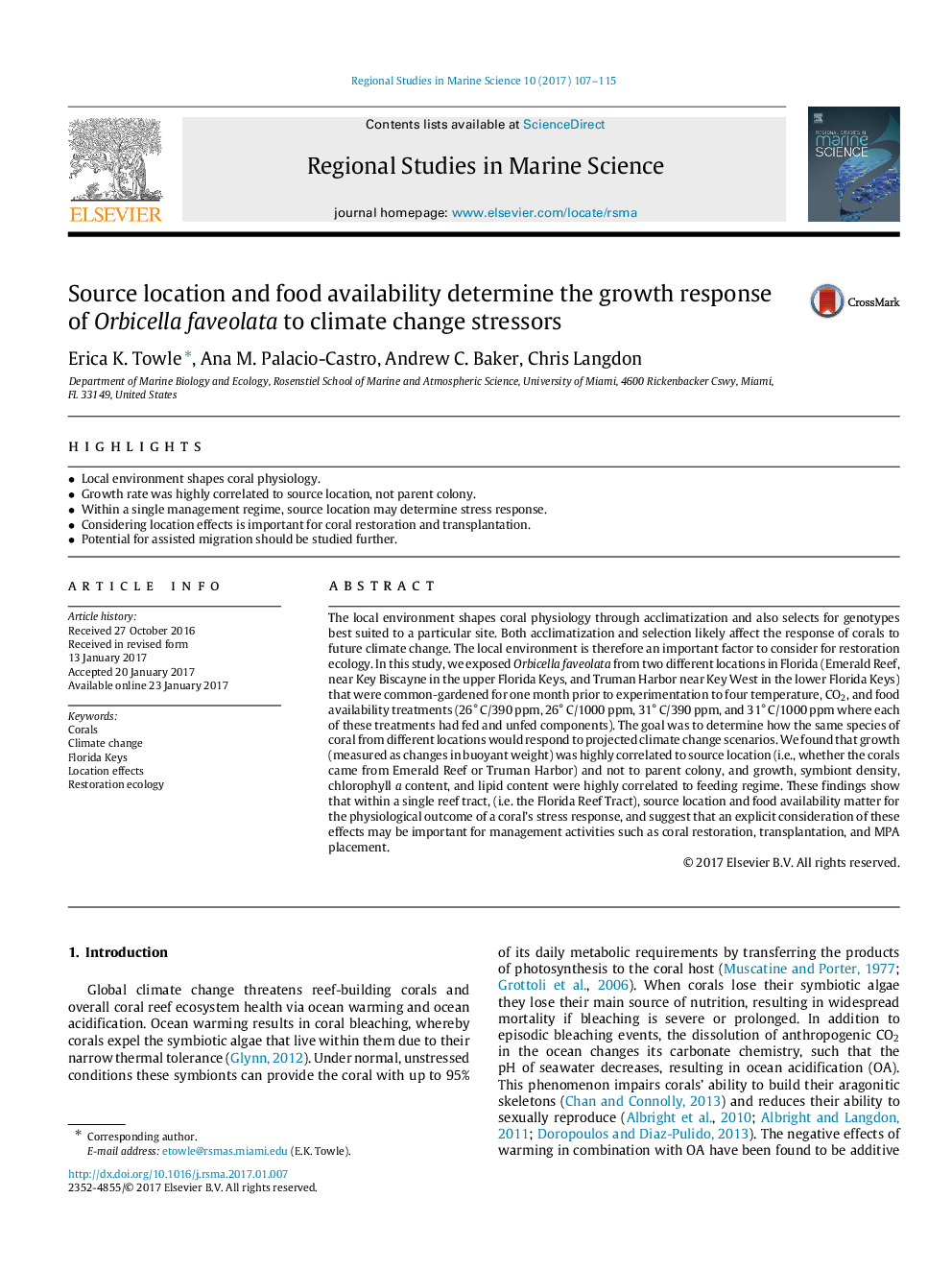| Article ID | Journal | Published Year | Pages | File Type |
|---|---|---|---|---|
| 5758093 | Regional Studies in Marine Science | 2017 | 9 Pages |
Abstract
The local environment shapes coral physiology through acclimatization and also selects for genotypes best suited to a particular site. Both acclimatization and selection likely affect the response of corals to future climate change. The local environment is therefore an important factor to consider for restoration ecology. In this study, we exposed Orbicella faveolata from two different locations in Florida (Emerald Reef, near Key Biscayne in the upper Florida Keys, and Truman Harbor near Key West in the lower Florida Keys) that were common-gardened for one month prior to experimentation to four temperature, CO2, and food availability treatments (26°C/390 ppm, 26°C/1000 ppm, 31°C/390 ppm, and 31°C/1000 ppm where each of these treatments had fed and unfed components). The goal was to determine how the same species of coral from different locations would respond to projected climate change scenarios. We found that growth (measured as changes in buoyant weight) was highly correlated to source location (i.e., whether the corals came from Emerald Reef or Truman Harbor) and not to parent colony, and growth, symbiont density, chlorophyll a content, and lipid content were highly correlated to feeding regime. These findings show that within a single reef tract, (i.e. the Florida Reef Tract), source location and food availability matter for the physiological outcome of a coral's stress response, and suggest that an explicit consideration of these effects may be important for management activities such as coral restoration, transplantation, and MPA placement.
Related Topics
Physical Sciences and Engineering
Earth and Planetary Sciences
Oceanography
Authors
Erica K. Towle, Ana M. Palacio-Castro, Andrew C. Baker, Chris Langdon,
